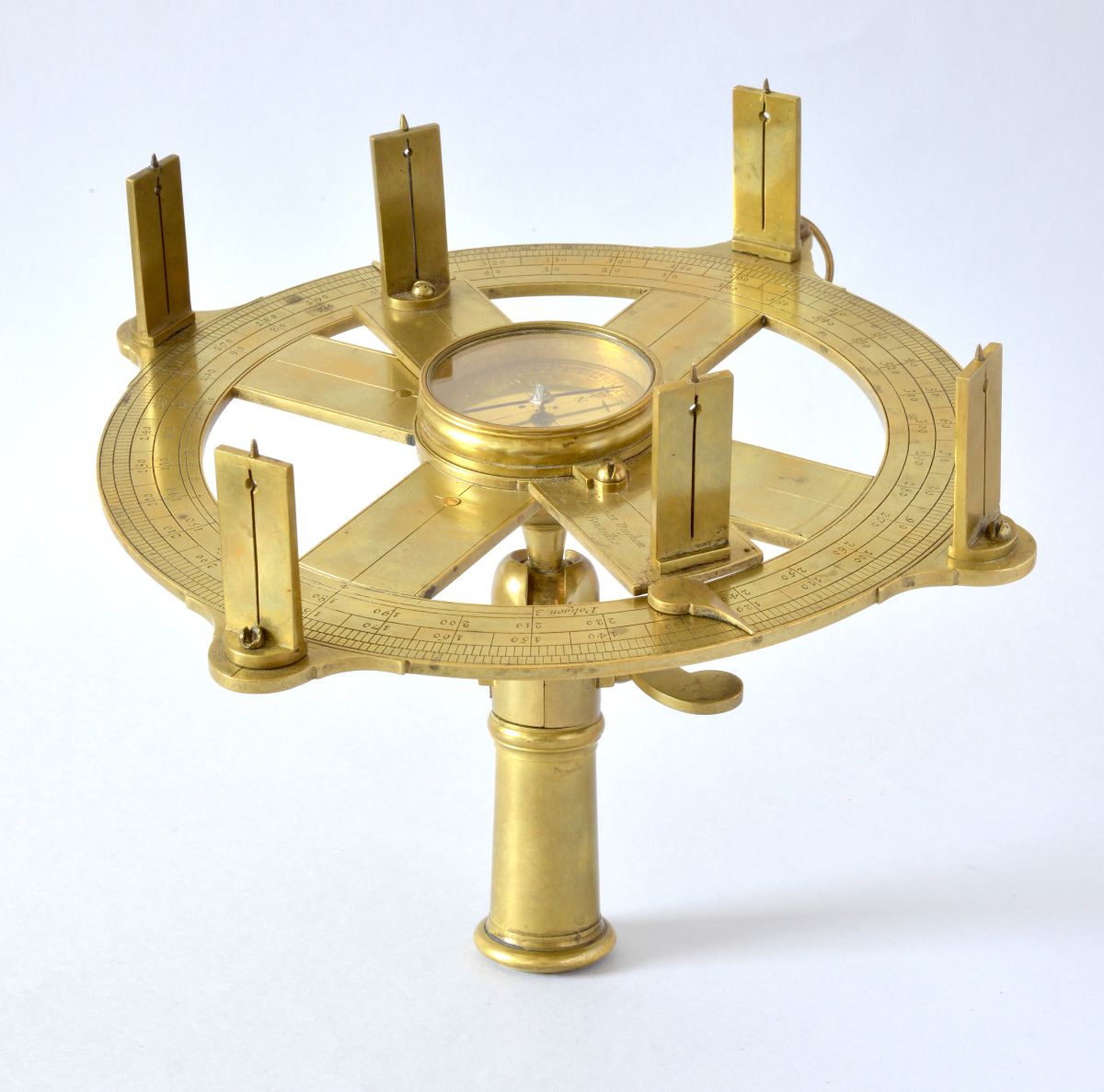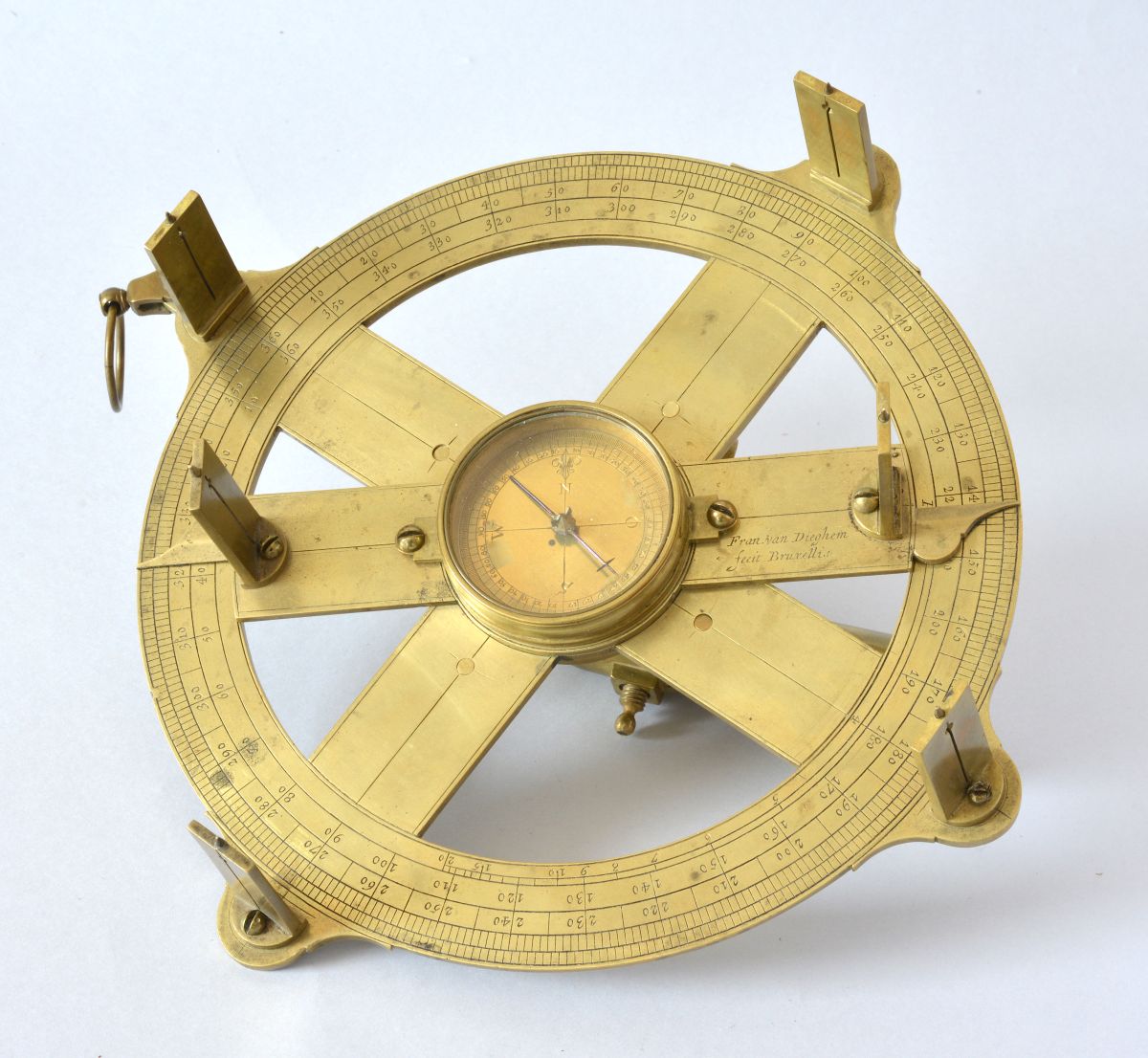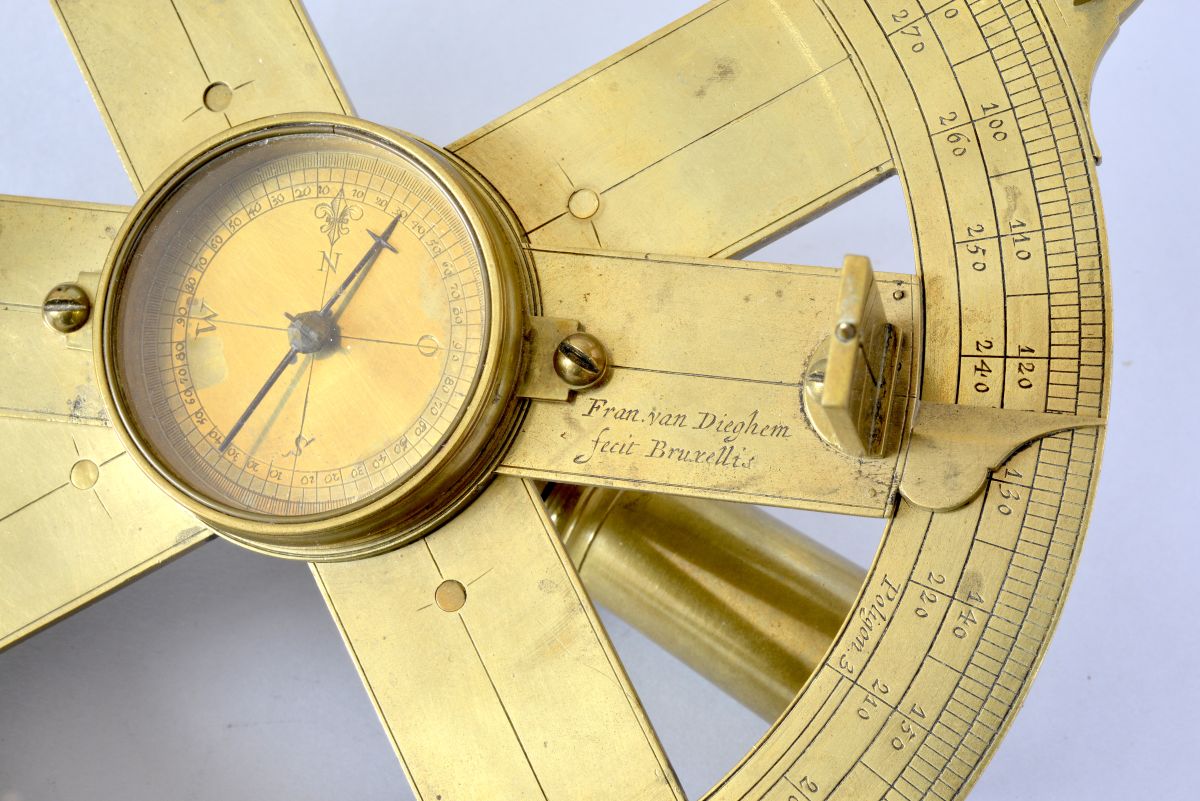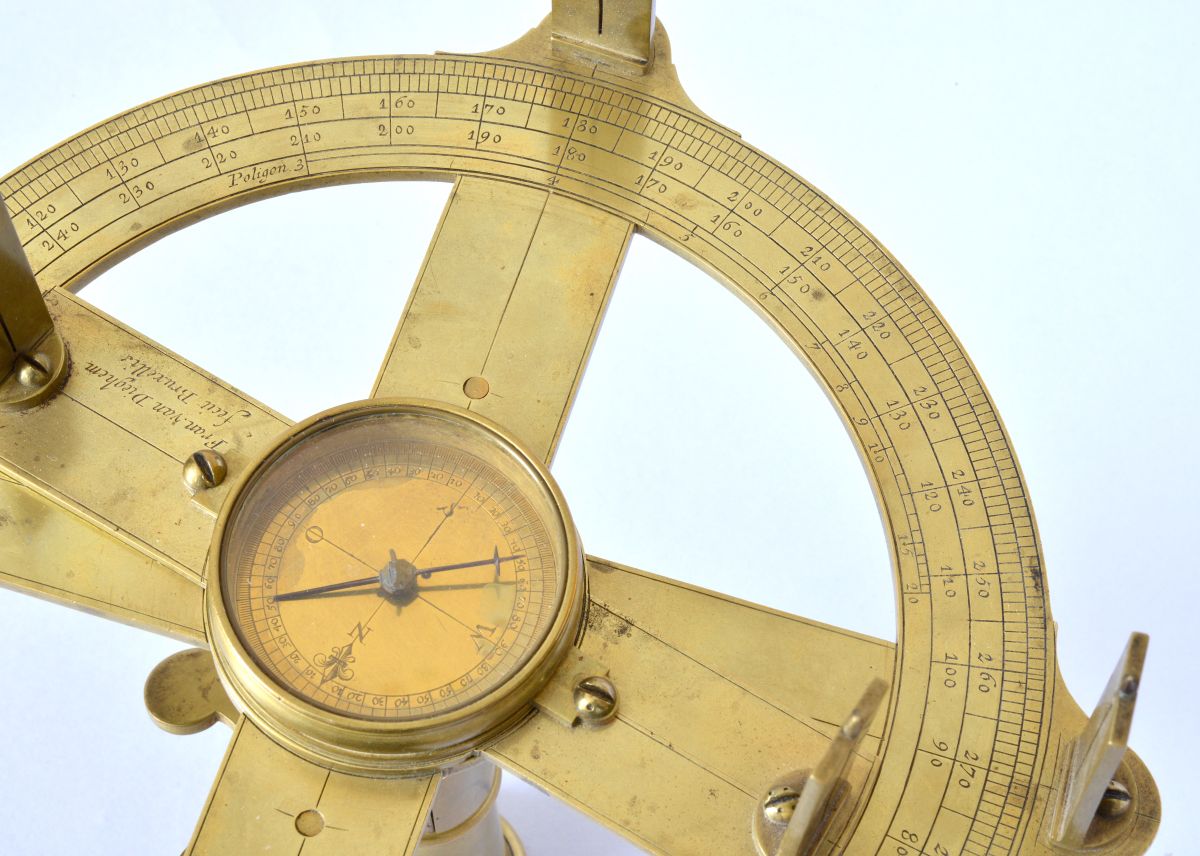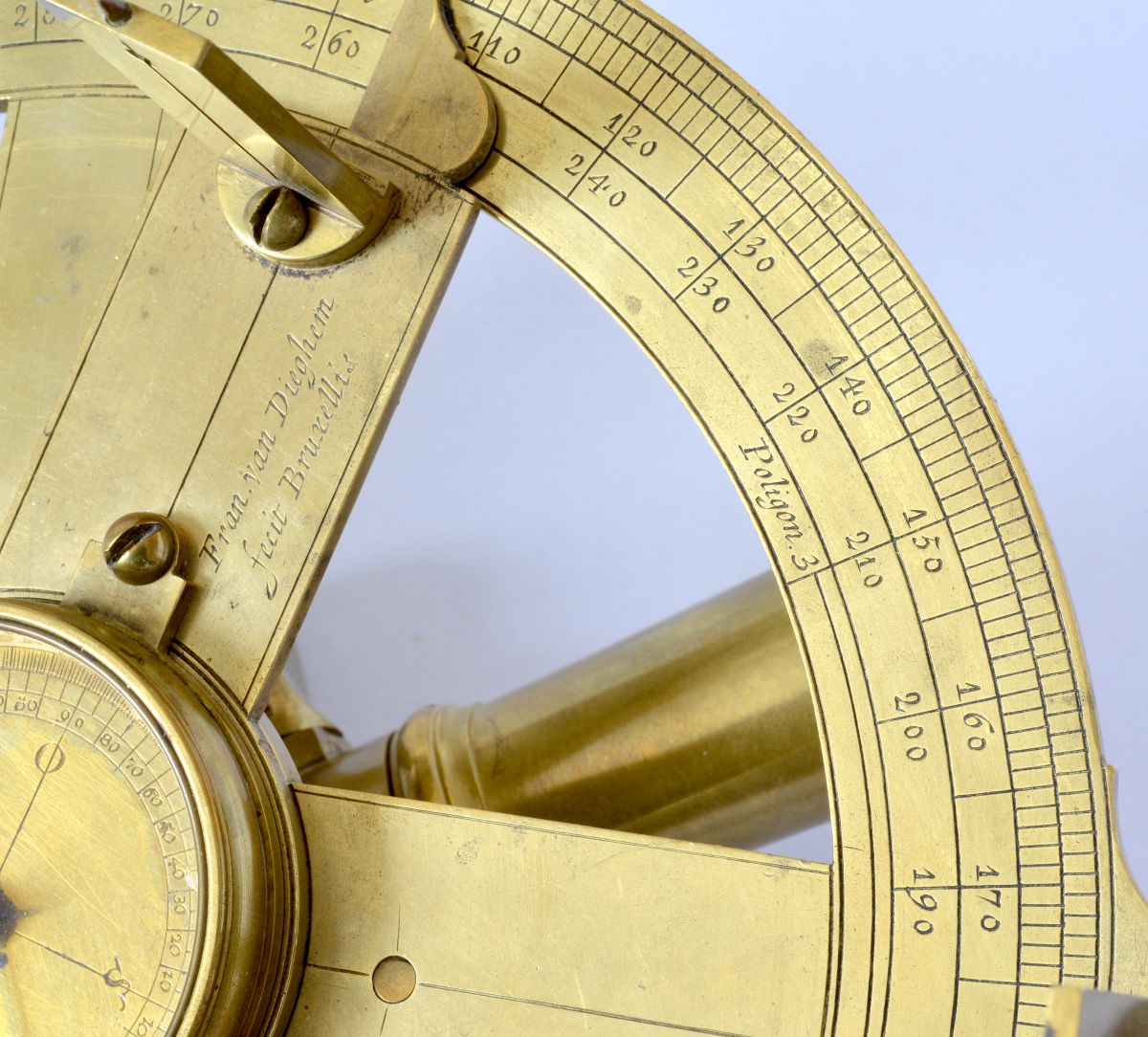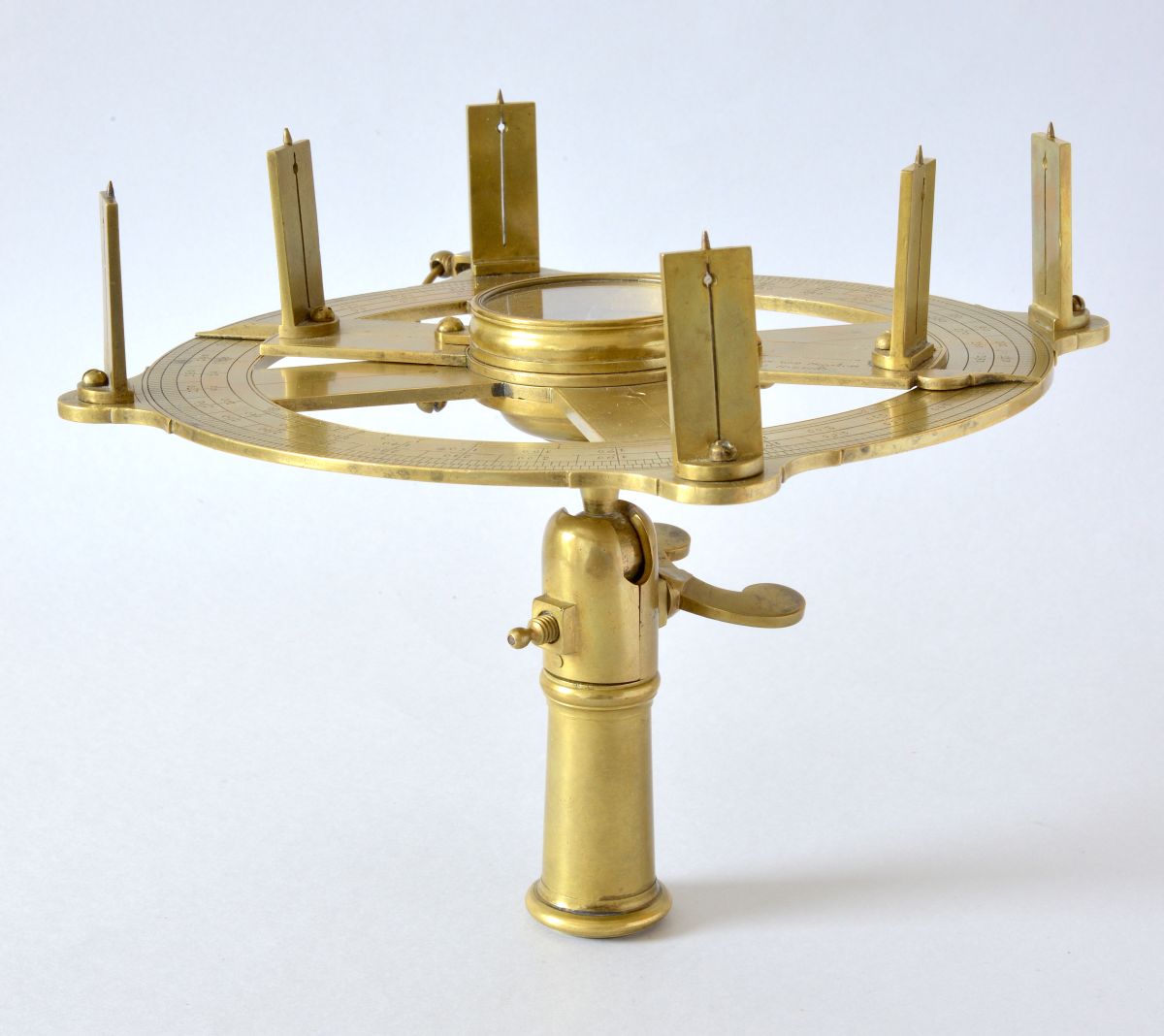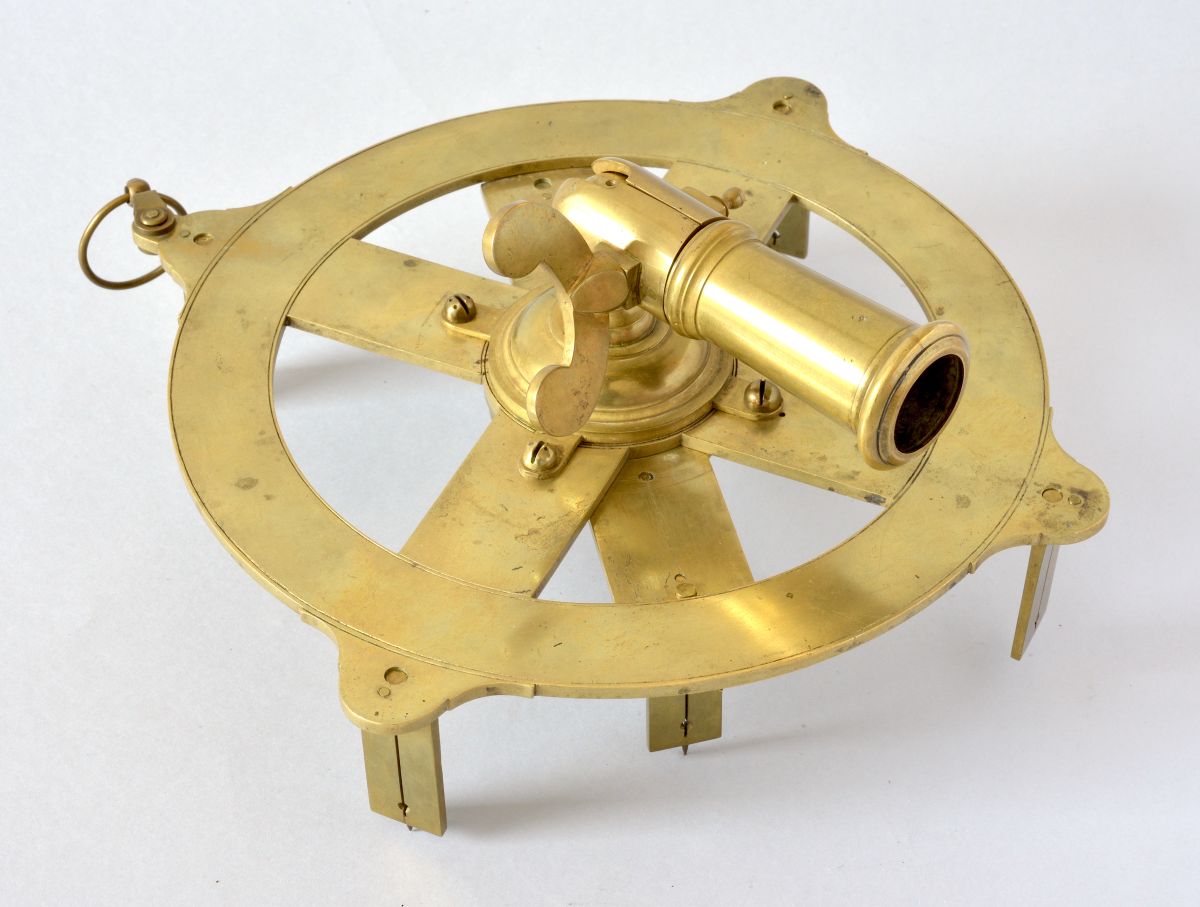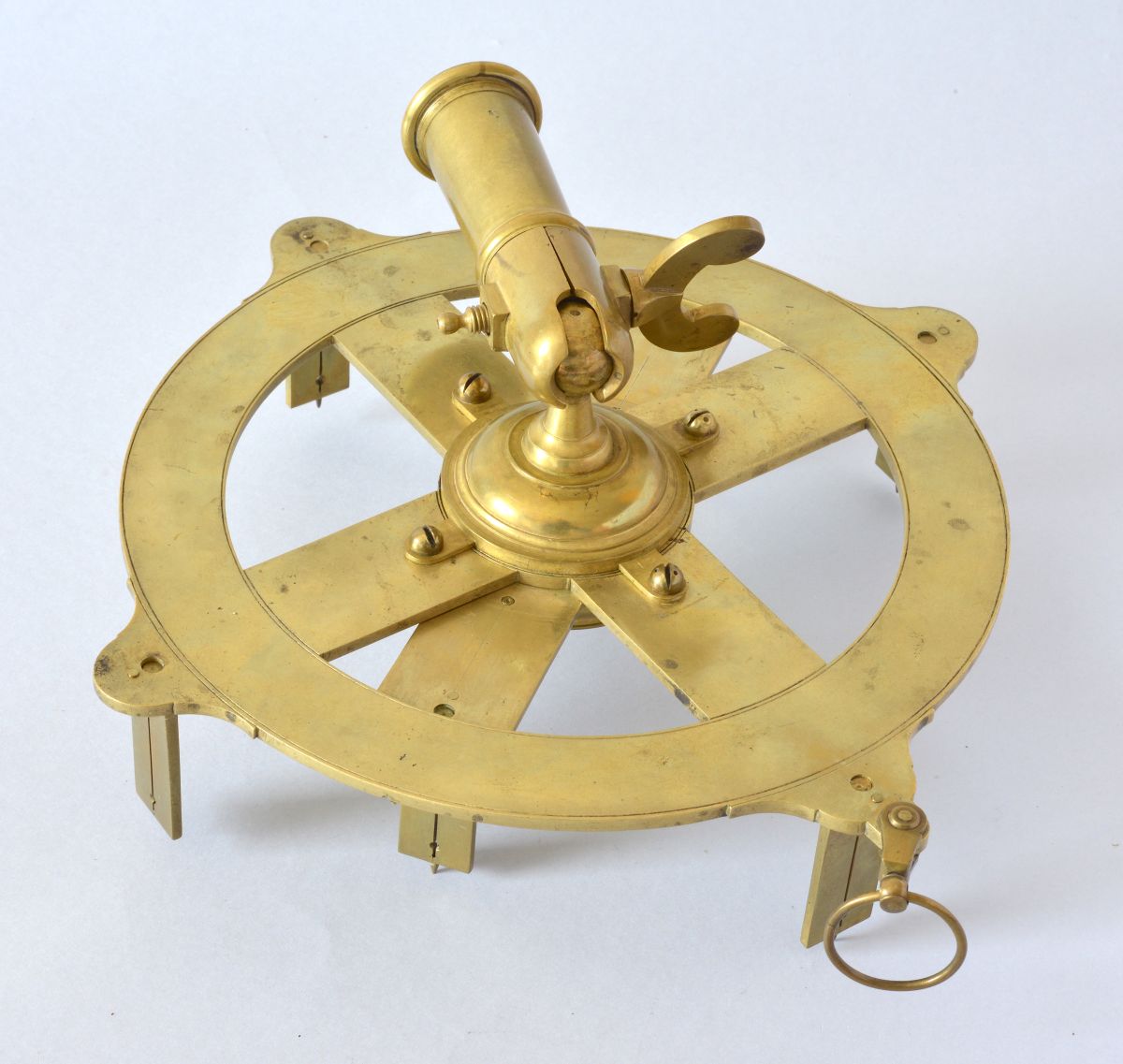Exceptional Holland Circle by Francis Van Dieghem signed “Fran. Van Dieghem fecit Bruxellis” in brass.
The instrument in the form of a Greek cross set within a circle, to which are attached a suspension ring and four fixed sighting vanes (pinnules) surmounted by a small tip.
The compass is engraved with the 4 cardinal points (N, O, S, W) and a fleur-de-lys, as well as a circular scale graduated four times from 0 to 90 degrees and subdivided into 10 degrees and 1 degree. A blued steel needle with brass pivot rotates freely in the center, and the entire compass is topped by a glass. The signature "Fran. Van Dieghem fecit Bruxellis".
This holland circle, also called simple theodolite or circumferentor and characteristic of the 17th century, is an extremely rare instrument.
- Indeed, it is the third known holland circle from Francis Van Dieghem.
- It is also one of the rare Flemish theodolites from the 17th century with its characteristic Flemish shape like the early models known from Damery or Coignet.
- Moreover, all the scales are very well engraved and quite accurate, which is also a characteristic of renowned Flemish workshops.
To our knowledge, only three other instruments signed by Van Dieghem are known: two holland circles and a quadrant.
Note 1 : Gemma Frisius was the inventor of this type of surveying instrument for measuring horizontal and vertical angles. It is described in his “Libellum locorum describandorum ratione” (1553) which was included in the German’s edition of Peter Appian's Cosmographiae (first edition 1529). Michel Coignet improved the method by adding a tangent-rule in 1613. During the 17th century, a compass was added in the centre for a better orientation of the instrument and accurate topography measurements.
Note 2 : The circle is used to measure the angle formed between two distant points to determine their distance. Its punctual principle can be used for both terrestrial and celestial purposes (calculating positions between stars).
In form and function, this instrument is close to the astrolabe, from which it derives.
Dimensions : total height of 25,8 cm x diameter of 18,6 cm.
Brussels circa 1684.
Additional documentation available.
Reference : D ex VD12
Price and additional photos on request.
Also discover many more marine and sciences objects in the dedicated section of our French website : « Marine et Sciences ».
